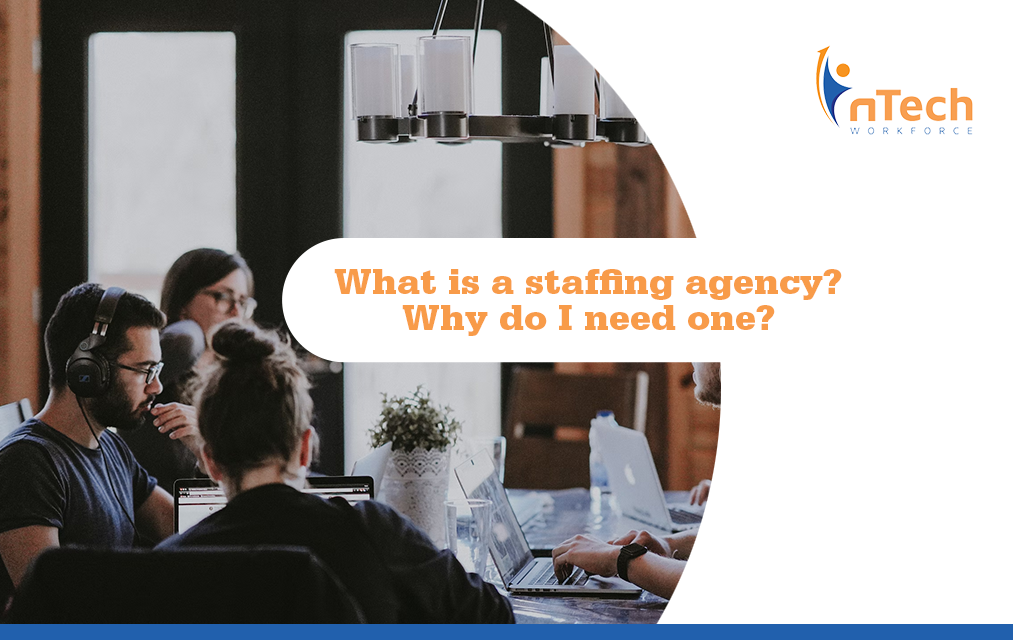How Should I Follow Up After an Interview Without Seeming Pushy?
You just wrapped up a great interview. You asked thoughtful questions, made a strong impression, and left feeling confident. Now what?
3 min read
![]() nTech Workforce
:
Oct 24, 2022 9:00:00 AM
nTech Workforce
:
Oct 24, 2022 9:00:00 AM

According to the U.S. National Labor Relations Board (NLRB), “To be a joint employer under the final rule [issued in February 2020], a business must possess and exercise substantial direct and immediate control over one or more essential terms and conditions of employment of another employer’s employees.”
Under the proposed rule, co-employment may exist if a buyer organization has the authority to control – whether directly or indirectly, even if reserved – at least one essential term or condition of employment, defined as “Wages, Benefits, and Other Compensation; Hours of Work and Scheduling; Hiring and Discharge; Discipline; Workplace Health and Safety; Supervision; Assignment; and Work Rules and Directions Governing the Manner, Means, or Methods of Work Performance,” says US NLRB.
Arthur Ransier, Director of Business Strategy at nTech, says:
Arguably, the greatest risk to co-employment is whether a buyer organization is considered a secondary employer and, therefore, subject to collective bargaining, picketing, or liability for unfair labor practices. One example of this would be the obligation to provide benefits, unemployment, and workers' compensation. But, unlike with misclassification, there is no spectrum for co-employment; that is, a business cannot argue that they are only “kind of co-employed” or not co-employed.
While co-employment subjects a secondary employer to collective bargaining and more, it is not illegal. The greater issue for organizations is worker misclassification. Worker misclassification refers to the practice of incorrectly labeling workers as contractors rather than full-time employees. This practice enables employers to avoid the payment of unemployment insurance, evade covering workers' compensation, and circumvent paying unemployment and other taxes.
The practice of worker misclassification may reduce labor costs for employers but creates an uneven playing field. Since it helps companies avoid taxes, state and federal governments suffer due to a shortage of tax revenue. Workers who are misclassified as independent contractors work without legal protections like unemployment benefits, wage and labor laws, and workers' compensation.
There are many implications for a business that misclassifies its employees. Some consequences include:
One can’t mitigate co-employment. Co-employment either exists or doesn't. Regardless of how your team defines a contract with a staffing company, you’d need to give up every element of control over the worker to avoid co-employment. That’s not feasible for most organizations.
You’ll notice that “length of temporary job assignment” doesn’t appear as a mitigating factor in the existing or proposed rule. There's no mitigating it, and there's nothing wrong about co-employment.
Ransier explains, “The risk to be mitigated is the misclassification of a worker, such that they are improperly classified as a Contractor (employee of a staffing company) rather than a full-time employee.”
In the case of contingent employment, the best way to avoid misclassification is to ensure a well-defined work order (or job description) that outlines the project, outcomes, deliverables, and a clear timeline for completion. In reality, many engagement/hiring managers want to use a standard job description template for contingent workers (contractors).
To avoid misclassification, the manager needs to spend more time developing a contractor-specific job description (i.e., a work order) that’s tied to a specific outsourced project, program, or process.
The nTech team understands and follows updates to regulations about co-employment and worker misclassification. As your Agency of Record, nTech Workforce considers the degree or extent of the right to direct or control the work or services provided when coming to a determination on misclassification. We partner with your business to ensure compliance and best practices when engaging subcontractors. With our vast community of experts, you don’t have to worry about misclassification and compliance risks.

You just wrapped up a great interview. You asked thoughtful questions, made a strong impression, and left feeling confident. Now what?

As a scrum master, you can look forward to being at the center of the project, coordinating between teams, and working with customers at the same...

Finding talented and suitable employees is a big challenge for many large, small, and medium-sized enterprises. With greater competition and a more...